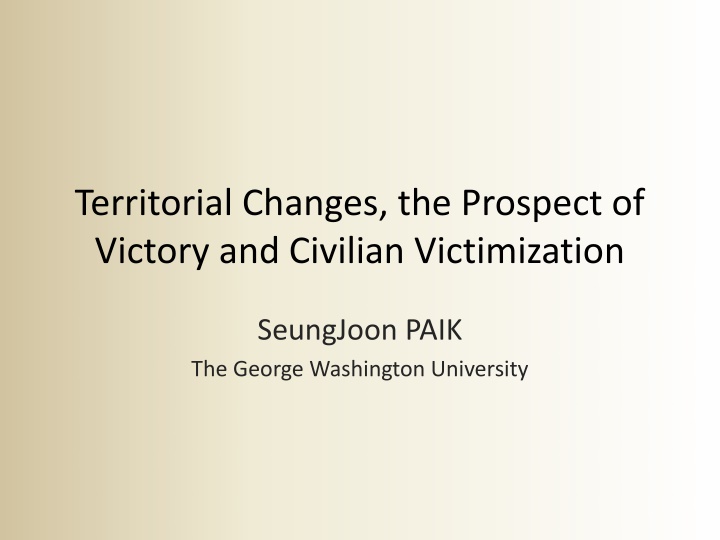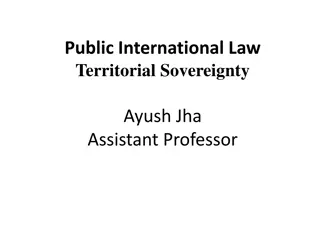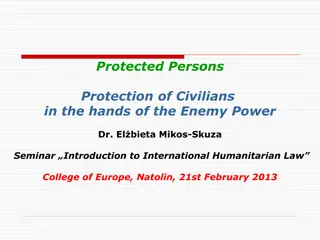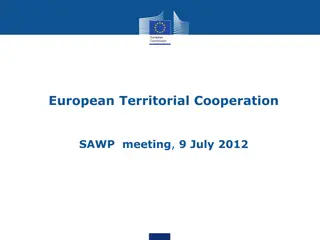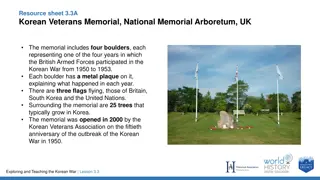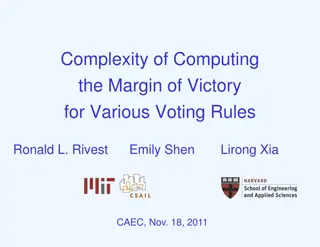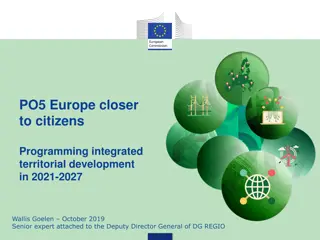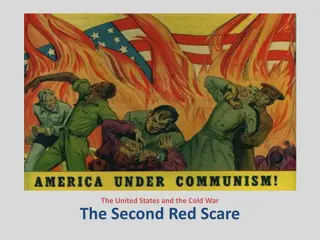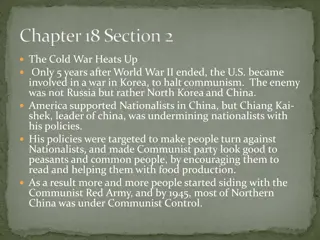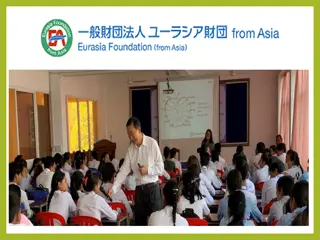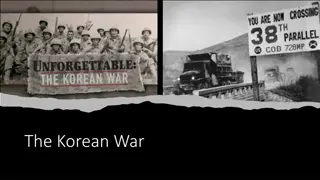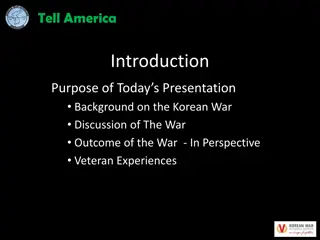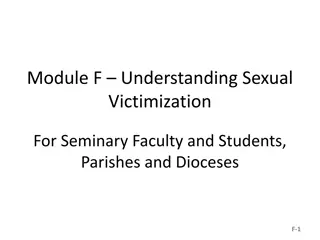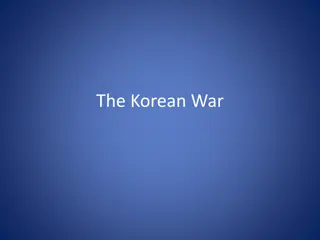Analysis of Civilian Victimization in the Korean War: Territorial Changes and the Prospect of Victory
This research presentation delves into the civilian victimization during the Korean War, exploring the impact of territorial changes and the prospect of victory. It examines the research question on why participants in conventional civil wars target civilians and what factors determine the violence they employ. The content covers existing literature theories, core assumptions, and the role of territorial changes and the prospect of victory in influencing violence against civilians.
Download Presentation

Please find below an Image/Link to download the presentation.
The content on the website is provided AS IS for your information and personal use only. It may not be sold, licensed, or shared on other websites without obtaining consent from the author.If you encounter any issues during the download, it is possible that the publisher has removed the file from their server.
You are allowed to download the files provided on this website for personal or commercial use, subject to the condition that they are used lawfully. All files are the property of their respective owners.
The content on the website is provided AS IS for your information and personal use only. It may not be sold, licensed, or shared on other websites without obtaining consent from the author.
E N D
Presentation Transcript
Territorial Changes, the Prospect of Victory and Civilian Victimization SeungJoon PAIK The George Washington University
Presentation Outline Research Question Existing Literature Theory Why the Korean War? Empirical Analysis Q & A
Research Question Civilian Victimization Cases During the Korean War (June 1950-July 1953) 600 537 500 400 300 200 100 16 6 0 June 1950 - May 1951 June 1951 - May 1952 June 1952 - July 1953 Source: Committee for Truth Concerning Civilian Massacre (2005)
Research Question Under what condition, do participants of conventional civil wars target civilians? What determines the magnitude of violence they use?
Existing Literature Theories focus on irregular civil wars - Kalyvas (2006), Weinstein (2007), Hultman (2007), Wood (2010) - Qualitative difference of warfare Laia Balcells (2010) - Bottom-up approach to CV in conventional warfare - Emphasis on civilian agency
Theory Core Assumption: Civilians as Resources Civilians are valuable sources of - Manpower - Material Goods - Legitimacy of state-building Civilians are not sources of threats because of - Disadvantageous position in terms of relative power - Armed groups tight control over them
Theory Territorial changes as cause of violence When gaining territory - Groups target civilians to reduce remaining enemy supporters and establish control When withdrawing from territory - Groups target civilians to reduce potential enemy supporters
Theory The prospect of victory as intervening factor When the prospect of victory is good - Groups use selective violence to minimize loss of future citizens When the prospect of victory is poor - Groups use less selective violence to reduce the enemy s future citizens
Theory Hypothesis 1: In conventional civil wars, civilian victimization is most likely to occur around the front lines when territory changes take place between armed groups. Hypothesis 2: Armed groups that take territory and expect to win the war (and stay in the territory permanently) will employ small-scale violence against strong enemy supporters. Hypothesis 3: Armed groups that take territory and do not expect to win the war (or stay in the territory permanently) will employ large-scale violence against enemy supporters.
Theory Hypothesis 4: Armed groups that lose territory and expect to lose the war (and will not be able to retake the lost territory) will employ large-scale violence against enemy supporters. Hypothesis 5: Armed groups that lose territory and expect to win the war (or retake the lost territory) will employ small-scale violence against strong enemy supporters.
Why the Korean War? Significance 300000 5000000 CN 46 RW 94 4000000 200000 BI 88 3000000 Variations in Key Variables SD 83 SD 63 NumDeath CN 46 2000000 PK 71 KR 50 KH 75 100000 VN 60 1000000 MZ 76 AF 78 NG 67 PK 71 KR 50 RW 94 AO 75 CD 96 NG 67 GT 60 LB 75 IQ 85 IQ 91 CD 96 BI 88 TW 47 BI 72 KH 75 VN 60AF 78 DeathMonth ID 75 IQ 61 MZ 76 PH 71 UG 81 LK 83 PE 80 - Territorial changes PH 72 LA 60 ZW 72 PK 73 HR 92 PH 50 JO 70 BI 72 KH 70 CH 56 AO 75 SD 63 RU 94 NI 78 SV 79 TR 84 RU 94 NI 78 CY 74CH 56SD 83 KH 70 UG 81 GE 92 BO 52 IQ 61 TW 47 GE 92 IQ 91 XK 98 ID 75 IQ 85 AR 55 ET 76 LB 75 LK 71 UG 66 CR 48 TR 84 GT 60 PE 80 IR 79 XK 98 LK 83 CU 58 IN 89 CO 80 ZW 83 SV 79 JO 70 IQ 59 PH 50 PH 71 SO 80 AZ 88 - Changes in prospect of victory CI 02 DZ 62 DO 65 IQ 59 LK 71 UG 66 CR 48 BO 52 ET 76 IR 79 DO 65 MA 75 CN 50 DZ 62 HR 92 CY 74 PK 73 ZW 72 LA 60 CN 50 CU 58 AR 55 PH 72 IN 89 CO 80 ZW 83 AZ 88 SO 80 CI 02 MA 75 5 1015 20 25 Data Availability and Reliability DeathProportion DeathperMonth - Recent investigation
Empirical Analysis Original dataset from the Korean War County month panel dataset of 6,042 observations Hurdle Negative-Binomial Model 1st step: Binomial probability model Territorial changes & occurrence of civilian victimization 2nd step: Zero-truncated negative binomial model Prospect of victory & magnitude of civilian victimization Process Tracing
